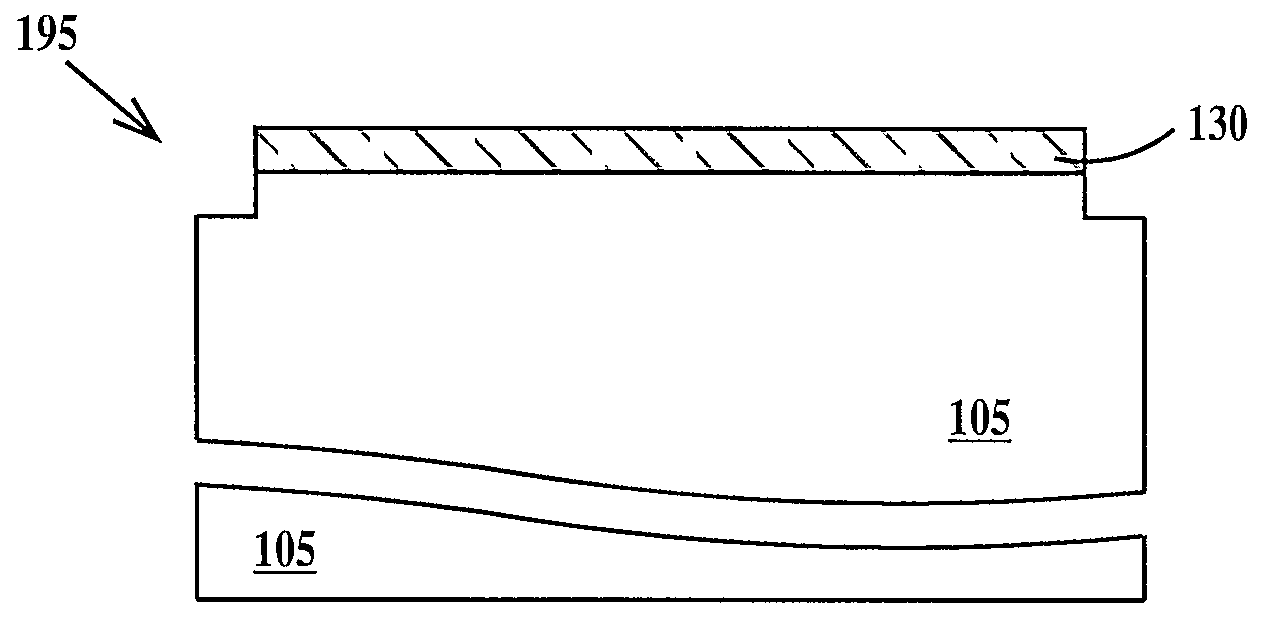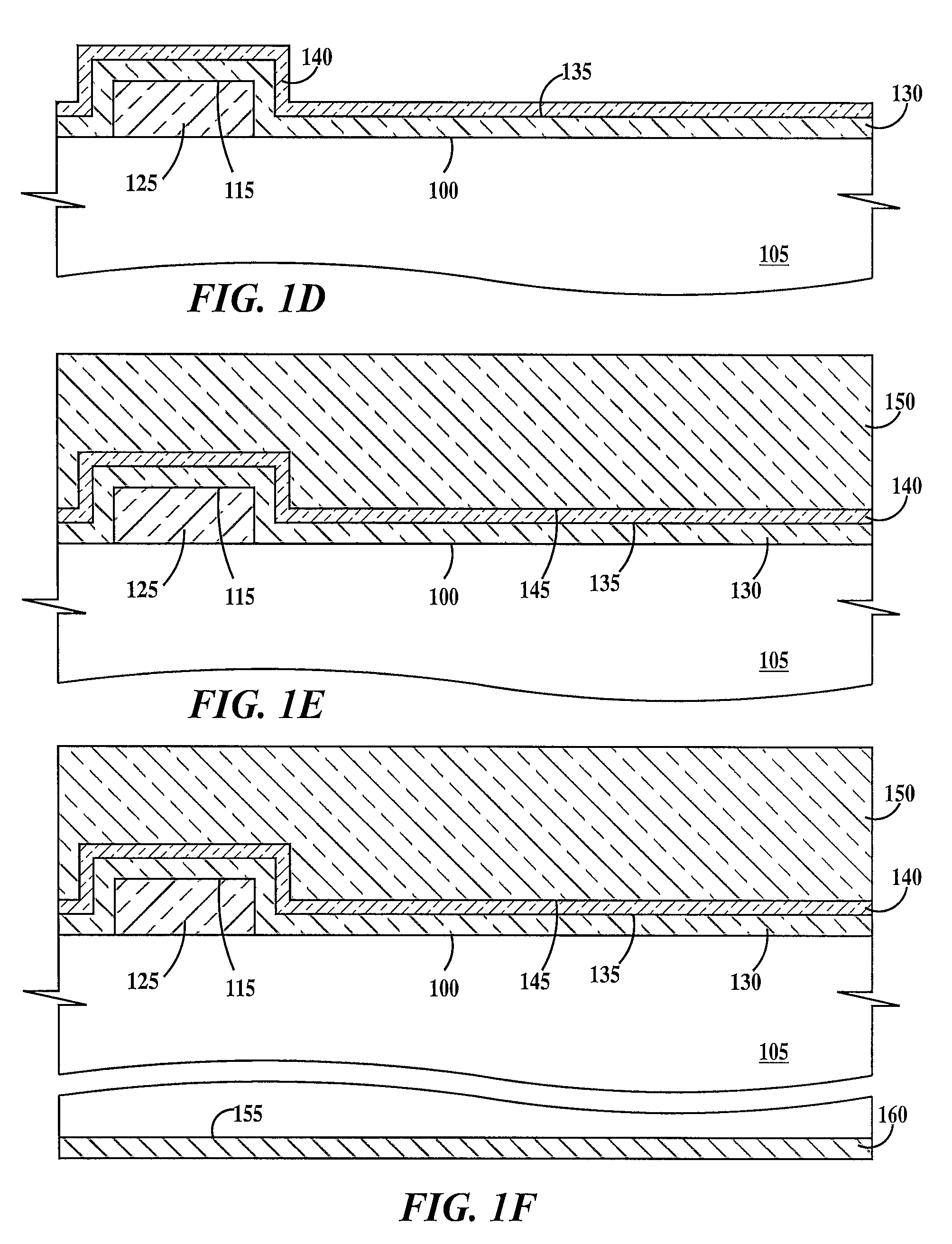Protection of polymer surfaces during micro-fabrication
a polymer surface and micro-fabrication technology, applied in the field of micro-fabrication, can solve problems such as interoperability problems in completed devices
- Summary
- Abstract
- Description
- Claims
- Application Information
AI Technical Summary
Problems solved by technology
Method used
Image
Examples
process example
[0031]The media layer selected was a polyarylether ketone polymer containing additional acetylenic functionality for thermal, photochemical or ionizing radiation crosslinking. The polymer contained about 15 monomer units on average yielding a molecular weight of about 4,000 Daltons. A 5 weight % solution of the polymer using cyclohexanone solvent was used for spin coating a 100 nm thick polymer film on a silicon wafer. The polymer film was cured for 1 hour in a nitrogen atmosphere at 380 C in order to activate the cross-linking reaction between the ethynyl moieties of the polyarylether ketone.
[0032]Poly-vinyl-alcohol with molecular weight of about 72,000 Daltons, purchased from Fluka, was dissolved in purified water to form a 5% by weight solution. The solution was spin coated onto the media layer to form a 300 nm thick media protection layer after curing (30 minutes at 90° C.). The PVA media protection layer remained on the polymer throughout all processing steps involving repeated...
PUM
 Login to view more
Login to view more Abstract
Description
Claims
Application Information
 Login to view more
Login to view more - R&D Engineer
- R&D Manager
- IP Professional
- Industry Leading Data Capabilities
- Powerful AI technology
- Patent DNA Extraction
Browse by: Latest US Patents, China's latest patents, Technical Efficacy Thesaurus, Application Domain, Technology Topic.
© 2024 PatSnap. All rights reserved.Legal|Privacy policy|Modern Slavery Act Transparency Statement|Sitemap



